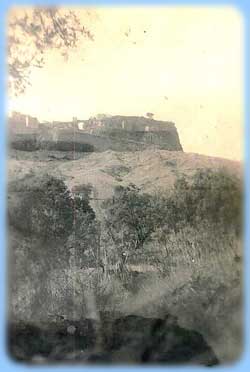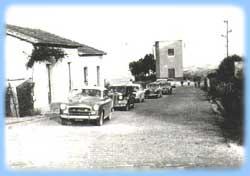 |
|
by Nicola Frammartino
Part one October 1987
------- Part two November 1987
|
|||
|
|
By
the time the 1952 administrative elections arrived, the political-administrative
panorama had greatly changed since 1946. We previously understood how
the 1946elections took place in an antiquated political climate. |
||
|
The fall of Fascism, the partisan fight in Central-North Italy, the advance of the Red Army in Europe are facts which for large slices of the population lit up their sense of hope and gave them reason to await radical social changes. These same facts however lit up a sense of fear and uncertainty in other social strata, a feeling of jumping into the darkness. For these reasons even on an administrative level, the forces which met on the battlefield were completely diversified and articulate. The awareness of their roles and identities was reinforced both for those who decidedly wanted changes and for those who were fighting to maintain the status quo. In other words, the confusion of 1946 was no longer conceivable, there was a great desire to openly take sides. The administrative data from 1952 surprised nobody, they had largely been seen from the electoral consultations. Resulting from the referendum elections of the 2nd of June regarding the institutional choice of a question of national interest and importance, the picture of a society divided in two emerged. The results were: Monarchy 2733 votes, Republic 1343 votes.
AnalysisFor the elections of the Constituent Assembly of the 2nd of June 1946 the results were as follows:
|
|||
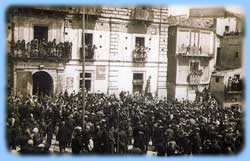
|
PCI
432 |
||
|
|
|||
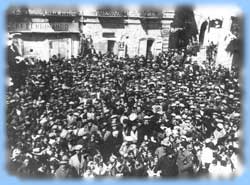 |
CAMERA
DEI DEPUTATI SENATO
DELLA REPUBBLICA |
||
|
The political-administrative instability of those years was a sure sign that the attempt, on behalf of the ruling classes, to reinstate the old equilibrium had been foiled. The instability was determined by a widening of the breach between political orientations, which were gaining ground with public opinion, and by the formation of the Giunta (council). - The Giunta led by the Mayor Bombardieri
- The Administration led by the Mayor Lombardi was made up of the same members with the exception of the councillor Camerieri, Domenico who was replaced by the councillor Scicchitano, Simone. It has to be noted that in neither of these two Giunta’s does a protagonist of the revolt of 1945 appear, which, however it may be judged, was something that left a loud echo in the conscience of the people and which, for that reason, had to have a place in the formation of the Town Council and the Municipal Giunta if the local leading class was to come in line with the strong tendency for renewal present in society. The electoral results of 1952 were also determined by the belligerent movement fight-for-land which was impetuously developing during those years and which was distinctly detached from the 1945 revolt because of the targets it set itself and the methods it used to reach them. This movement was guided by the syndicates and by the left-wing working class parties (PCI and PSI) and it fought to obtain new democratic spaces of the masses of the working class. The 1952 electoral results were as follows: |
|||
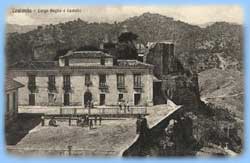 |
Tromba
(PCI+PSI) 1524 |
||
|
Following the elections of 1952 Armando Hyeraci was elected Mayor.
------- Part three Febrary 1988
THE 1952 ADMINISTRATIVE ELECTIONS The town council elected in 1952 was composed as follows: TROMBA:
Napoli Vincenzo, Tuccio Ilario, Frajia Francesco, Sgrò Vittorio, Simari
Vincenzo, Muscatello Agostino, Cirillo Vincenzo. Hyerace, Armando was elected Mayor and he
led the Giunta composed of the following: The
Giunta expressed a solid majority (at least that is what it seemed)
formed by the D.C. and the Torre Civica (a centre-right wing formation). |
|||
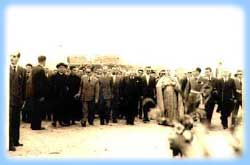 |
Thus, all the Administrations of the time were doomed to failure one after the other because they were born from a logic wishing to resuscitate the past. To confirm this, after a year and a half of govern, precisely, in December, the Mayor Hyerace was forced to resign. |
||
|
The solicitor Mazza did not head the Town Council for very long either: by the end of May 1955 his bout as Mayor was already over and the position as head of the Town Council was placed in the hands of a prefectorial commissary.
THE 1956 ADMINISTRATIVE ELECTIONSThe 1956 elections were the turning point. They weighed heavily on the political history of Caulonia for a long time. Therefor, before proceeding to reveal the electoral data and its critique, one should try to pinpoint the causes for this change. Some of the following observations have already been expounded; but they will be repeated even though briefly. |
|||
|
|
Caulonia had been a small farmer owned centre until the mid 1950’s. The large estate had already been dismembered before the Unification of Italy leaving a small property area on one side and on the other, an area made up of small to medium sized farms. In absolute terms the farms were all of modest dimensions. However, in an economic context such as Caulonia’s, which was characterised by strong elements of cultural backwardness and poverty, the presence of a social group which was largely wealthy automatically assumed a position of particular prominence, even control. This class held all the power and used it with cold determination without seeking any kind of mediation with the lower classes. The episodes and examples of the cruelty of the upper class remembered by the population are innumerable. |
||
| Basically, in the history of our community the friction between poor farmers, peasants, artisans and the rest of the poverty stricken population and the so called upper class wealthy landowners was extremely acute. It was also decisive for the determination of political choice and orientation of the wide layers of the population. | |||
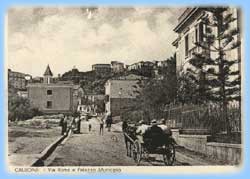 |
The flooding of 1951 suddenly revealed the state of things and also revealed the incapacity of the State to help in any way. |
||
Following the war, from the people’s social classes, where a new awareness of their rights and their dignity had matured, there rose a strong request for state welfare. The wealthy social classes, on the other hand, kept defending the old State which was repressive and violent towards poverty stricken people. This contrast between positions and prospects stirred up the hard struggles of those years which obtained some important results: the beginning of the Agrarian Reform and a new policy for public works. This last, generated some very important effects on the social relationships level: the birth of a new class, the working class, who organised themselves and fought in new ways, cleanly breaking off from the old rebellious tradition of the southern plebeans which was strongly present in Caulonia. To the violent bursts of working class people’s anger which, even though capable of stirring up the whole town within an hour or a day, couldn’t provoke any alteration in the local power positions, was added the struggle organised by the party and the syndicate. The people no longer assaulted the town hall, the barracks or the houses of the rich land owners to claim vengeance for the injustices they were subjected to; they no longer abandoned themselves to improbable dreams of social cataclysms; they shed old projects which were revealed to be unrealistic notwithstanding their great moral value. The working class’ struggle by now was ordered and conscious of its role, jealous of its rights and respectful of its duties. Another characteristic phenomenon belonging to the first half of the 1950s, then underrated, was the crisis which was spreading through the agricultural world which led to a diminished capacity for autonomous expression within the farming world. This is proved by the absence of the Gallo list in the elections of 1956, which had represented the farmers and peasants in 1952. Emigration was another phenomenon which profoundly modified the economic, social and political stability of our community. It took on the role of a safety valve for explosive tensions; by reducing the number of mouths to feed, it constituted an effective remedy against the tumultuous and uncontrollable exploding of the poor people’s desperation. |
|||
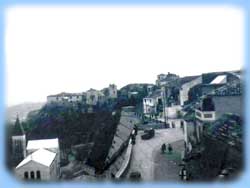 |
|
||
|
Emigration did however produce one immediate effect: the lightening of unemployment pressure on the governing classes. It was enough to be seen as a liberation by those who were leaving because they had the light of hope in a different future; for those who stayed behind, the peasants, farm hands and small artisans, it meant diminished competition in the work sector which meant that the wealthy classes could no longer choose who would work for the day from the masses in the streets and squares of the town as they had done until then. The electoral results of 1952 were influenced by these profound social changes, but it was the elections of 1956 in which the above mentioned processes matured, fully unveiling their effects: the defeat of the old ruling classes. |
|||
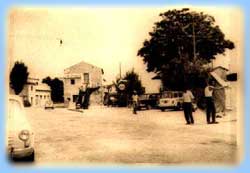 |
THE 1956 ADMINISTRATIVE ELECTIONS PCI:
1232 votes (8 seats) |
||
|
PSI:
Vincenzo Napoli, Tuccio llario, Alvino Ilario, Alvino Rosa, Garuccio
Nicola, Colloridi Francesco, D'Amato Edoardo, Fantò Ilario,Papazzo Giuseppe. Napoli Vincenzo, was elected Mayor and his
giunta consisted of: Following the death of Vincenzo Napoli, Ilario Tuccio was elected Mayor. His giunta was the same with the exception of Fantò, Ilario taking Papazzo, Giuseppe’s place and Amato, Francesco taking Tuccio, Ilario’s old place. |
|||
|
|
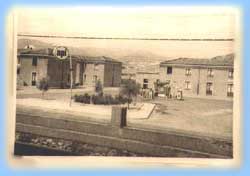 |
||
|
|
|
||
 Copyright© 2000 Caulonia 2000 per continuare a cambiare - All rights reserved |
|||



